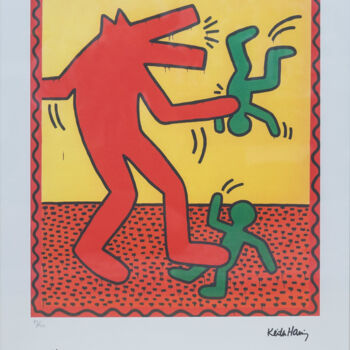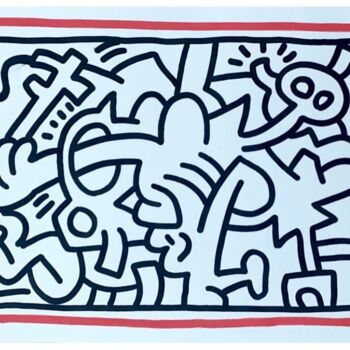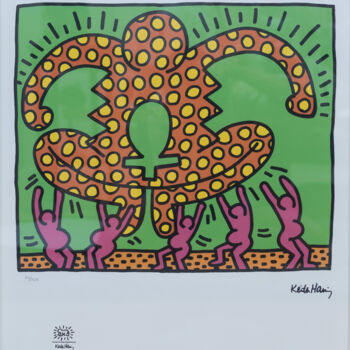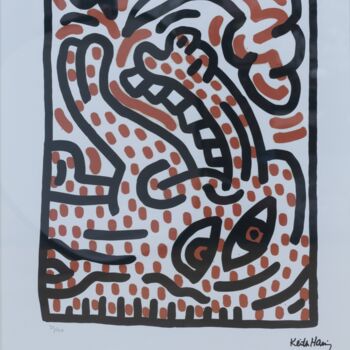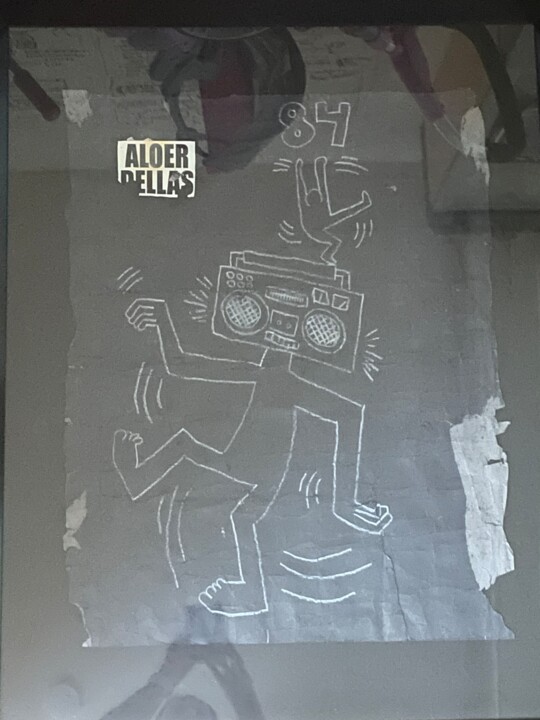
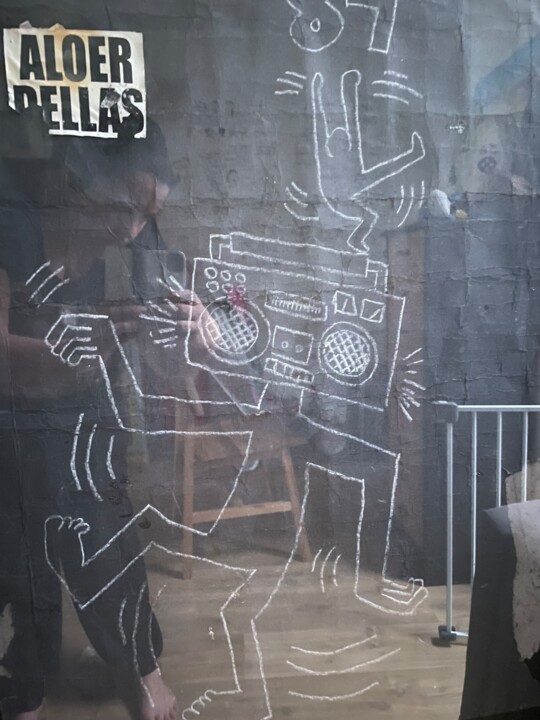
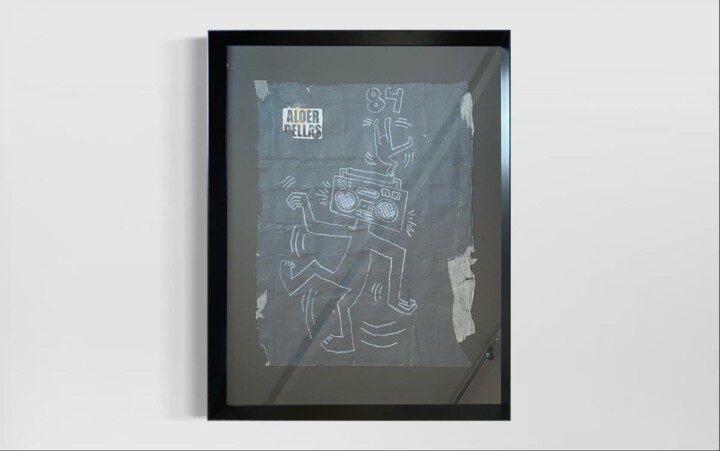
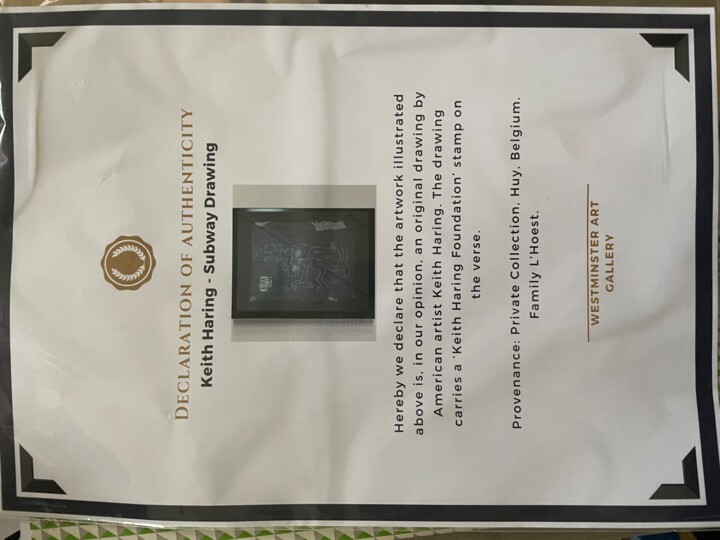


Let us know if you would like to see more photos of this artwork!
- Back of the work / Side of the work
- Details / Signature / Artwork's surface or texture
- Artwork in situation, Other...
Subway Drawing (1984) Drawing by Keith Haring
More info
- Packaging (Box or cardboard packaging) All artworks are shipped with a premium carrier, carefully protected and insured.
- Tracking Order tracking until the parcel is delivered to the buyer. A tracking number will be provided so that you can follow the parcel in real-time.
- Delay Worldwide delivery in 3 to 7 days (Estimate)
- Customs not included The price does not include customs fees. Most countries have no import tax for original artworks, but you may have to pay the reduced VAT. Customs fees (if any) are to be calculated on arrival by the customs office and will be billed separately by the carrier.
More info
- Trackable Online Certificate of Authenticity Authenticity Certificates can be verified online at any moment by scanning the artwork code.
- Artist Value Certification Experts study the work and career of an artist then establish an independent and reliable average price value. The average price value situates the artist on a price range for a given period. The experts may also be asked to establish a more precise estimate for a particular work.
More info
100% secure payment with SSL certificate + 3D Secure.
More info
-
Original Artwork (One Of A Kind)
Drawing,
Chalk
on Paper
-
Dimensions
40.9x33.1 in
Dimensions of the work alone, without framing: Height 37in, Width 29.1in - Artwork's condition The artwork is in very good condition
- Framing This artwork is framed (Frame + Under Glass)
- Categories Drawings under $20,000 Street Art Music
Haring drew over 5,000 chalk drawings over a five-year period, from 1980 to 1985, in New York City subway stations (visit the Keith Haring Foundation website to see his work year by year). Since the beginning of his career, Haring was determined to create art that could be for everyone, both through an accessible style and by locating his work in easily reachable, public locations. Creating art on the street meant that a bigger audience could see his work, outside of the more insular space of an art gallery.
In late 1980, Haring noticed that New York City subway’s blank advertising spaces were covered with black matte paper when advertising subscriptions expired. He immediately purchased some chalk and started drawing. Over the next five years, this became a daily, repetitive obsession: he would ride the subway, look for these empty spaces of black paper, drawn quickly—without any preparation—and then leave on the next train. Through incessant repetition, Haring’s subway drawings allowed him to perfect his highly recognizable reduced linear vocabulary, and to create an inventory of images. Simplification was practical: he needed to complete his drawings as fast as possible to avoid being arrested. He created characters, such as the barking dog and the radiating baby, which he drew on flat planes with no spatial depth, often with only a horizon line or a staircase to suggest space. Drawn close to the surface like cartoons, his images had immediacy and impact and could carry multiple meanings through various combinations.
Haring’s arrival in New York coincided with graffiti’s peak when artists covered subway cars, walls, and storefront gates throughout the city. Haring’s well-defined style benefited from graffiti, which offered lessons on how to make graphic images visible in a cluttered urban environment and stressed the importance of motion, speed, and improvisation. Haring never considered himself to be a graffiti artist, however. His subway drawings significantly differed from graffiti in location, timing, and medium. Haring often used white chalk and worked during the day so that he could interact with his audience. In contrast, graffiti artists usually used spray paint or markers, working at night. Graffiti encompassed a subculture at the social margins of New York City that excluded artists like Haring both racially and socio-economically.
Related themes
Keith Haring was born on May 4, 1958, in Reading, Pennsylvania, USA, and grew up in nearby Kutztown. Showing an early interest in art, he enrolled in the Ivy School of Professional Art in Pittsburgh in 1976 but left after two semesters. Haring then moved to New York City in 1978 to attend the School of Visual Arts. In the vibrant art scene of the late 1970s and early 1980s, he found his creative voice and a community of like-minded artists.
Haring's career took off in the early 1980s when he began creating public art in the subway stations of New York. His distinctive style, characterized by bold lines, vivid colors, and simplified, iconic figures, quickly gained attention. His work often conveyed social and political messages, reflecting his concerns about issues such as AIDS awareness, apartheid, drug addiction, and LGBTQ+ rights.
In 1982, Haring had his first solo exhibition at the Westbeth Painters Space in Manhattan. His art gained international recognition, and he participated in renowned exhibitions, including the Documenta 7 in Kassel, Germany, in 1982. His fame continued to grow, and he opened the Pop Shop in 1986, a store that sold Haring's art in various forms, making it more accessible to the public.
Haring's commitment to social activism intensified as he used his art to address the HIV/AIDS epidemic, which he himself was diagnosed with in 1988. He created the famous "Ignorance = Fear / Silence = Death" image to promote AIDS awareness. Despite his declining health, Haring remained dedicated to his artistic and activist endeavors until his untimely death on February 16, 1990, at the age of 31.
The Keith Haring Foundation, established after his death, continues to preserve and promote his legacy. Haring's influence extends beyond the art world; his impact on popular culture, fashion, and activism remains profound, and his work continues to inspire new generations of artists and activists around the world.
-
Nationality:
UNITED STATES

- Date of birth : 1958
- Artistic domains: Represented by a Gallery,
- Groups: Contemporary American Artists Artists presented by a gallery









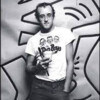
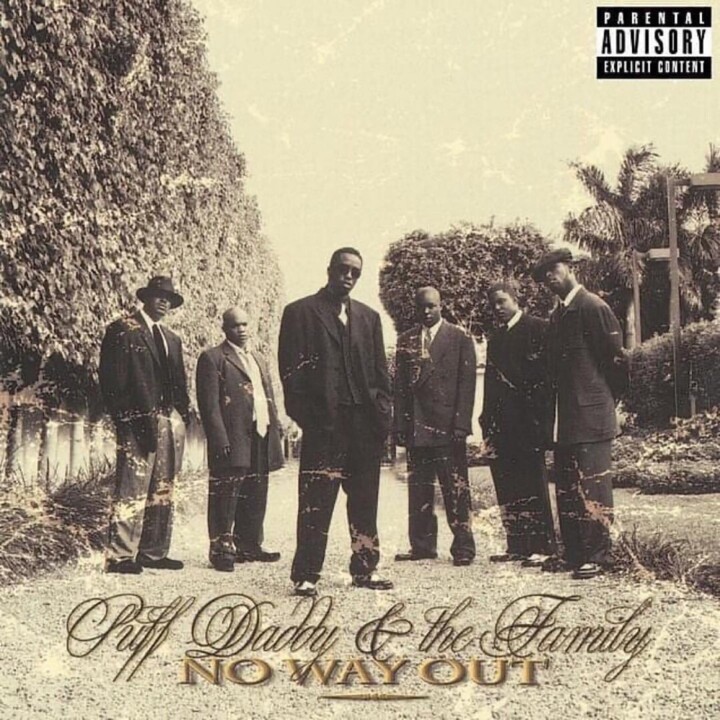 P. Diddy, from Hip-Hop to Record-Breaking Art Collection
P. Diddy, from Hip-Hop to Record-Breaking Art Collection
 Elton John: Musical Virtuoso and Art Collector Extraordinaire
Elton John: Musical Virtuoso and Art Collector Extraordinaire
 Madonna: art lover and a supporter of contemporary art
Madonna: art lover and a supporter of contemporary art
 Steve Cohen: The Hedge Fund Titan and Art Collector
Steve Cohen: The Hedge Fund Titan and Art Collector
